When it comes to working on projects, having the right tools readily available is essential for smooth workflow and efficiency. But where exactly should you store your tools while working? Can Step Ladders Hold Tools?
Many people opt for step ladders as a convenient solution. However, before piling up your tools on a step ladder, it’s crucial to understand their weight capacity and safety limitations.
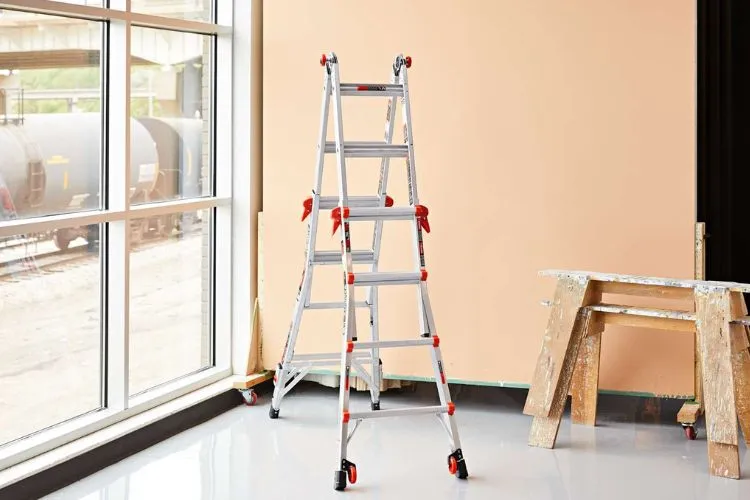
In this article, we will explore whether step ladders can hold tools, provide safety tips, and guide you on determining the maximum capacity of your ladder.
Can Step Ladders Hold Tools?
Step ladders are primarily designed for providing support and stability while working at heights. They consist of two A-frame sections joined by hinged rungs and offer a convenient platform for reaching elevated areas.
However, it’s important to note that step ladders have weight limits that must be adhered to for safe usage. The weight capacity of step ladders varies depending on their design and materials.
Generally, household step ladders have a weight capacity ranging from 200 to 300 pounds, while commercial-grade ladders can typically support heavier loads of 300 to 375 pounds. Exceeding the weight limit can compromise the ladder’s stability and pose serious risks to your safety.
Factors Affecting Tool Storage Safety on Step Ladders
Several factors come into play when considering the safety of storing tools on step ladders. It’s crucial to take these factors into account to prevent accidents and enhance overall safety.
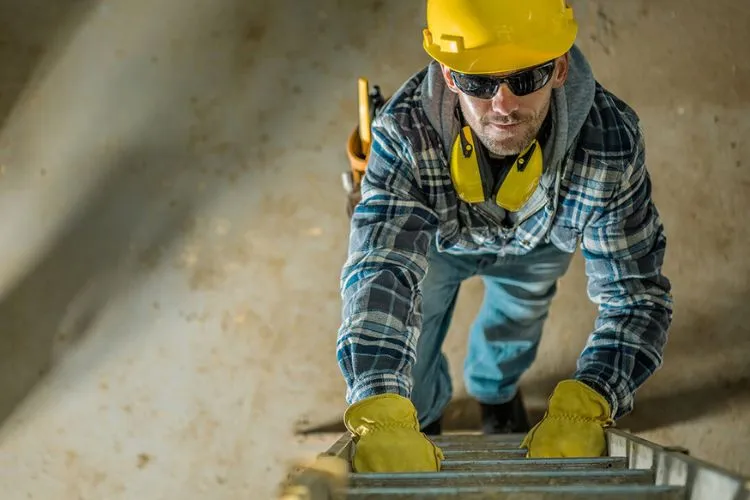
- Weight Distribution: Placing too many tools on one side of the ladder can affect its balance and stability. Distribute the weight evenly across the ladder to maintain its center of gravity.
- Tool Storage Method: Using tool trays and attachments designed specifically for step ladders is highly recommended. These accessories are built to securely hold tools, preventing them from falling off while you work.
- Ladder Positioning: Ensure that your step ladder is placed on a stable and level surface. Avoid using the ladder on uneven ground or placing it on objects like boxes or stacks of materials to reach higher areas. Such practices compromise stability and increase the risk of accidents.
- Ladder Stabilization: To further enhance ladder stability, extend the ladder fully and lock the spreader bars in place. Additionally, use non-slip material on the ladder feet to prevent it from sliding or tipping over.
Best Practices for Safely Storing Tools on Step Ladders
To ensure maximum safety while storing tools on step ladders, it is essential to follow a set of best practices. By implementing these practices, you can mitigate risks and work with confidence.
- Use Tool Trays and Accessories: Invest in tool trays, buckets, or attachments designed to fit securely on step ladders. These specialized accessories are built with proper weight distribution and stability in mind, keeping your tools safely within reach.
- Securely Fasten Tools: Use hooks, clamps, or bungee cords to secure your tools to the ladder. This prevents them from falling off, especially when you move the ladder or accidentally bump into it.
- Consider Weight and Size: Take into account the weight and size of the tools you plan to store on the ladder. Heavier and bulkier tools may pose a higher risk of instability, so use your discretion when deciding how many tools to place on the ladder.
- Regularly Inspect the Ladder: Before each use, thoroughly inspect the ladder for any damages or defects that may compromise its structural integrity. Pay close attention to steps, rungs, and hinges, and ensure they are in good condition.
- Don’t Overload the Ladder: Always adhere to the weight capacity specified by the ladder manufacturer. Overloading the ladder can lead to instability, making it more susceptible to accidents.
Understanding When Not to Store Tools on Step Ladders
While step ladders can be a convenient storage solution for tools, there are situations when it is not recommended to use them for this purpose. It’s crucial to recognize these scenarios to prioritize safety.
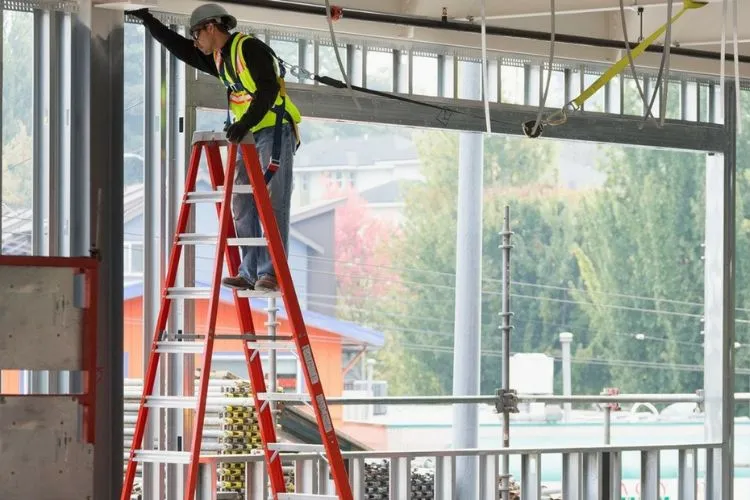
- High-Risk Environments: If you are working in an environment where tools can be easily knocked off the ladder or pose a threat to others (e.g., crowded areas), it is best to explore alternative tool storage options.
- Heavy or Bulky Tools: Tools that exceed the weight capacity of the ladder or are too large to fit securely on the ladder may compromise stability. In such cases, consider alternative storage solutions, such as toolboxes or nearby tables/shelves.
- Frequent Ladder Movements: If you need to frequently move the ladder to reach different areas, it’s advisable to store your tools in a portable toolbox or tool belt. Carrying tools while climbing up and down the ladder can increase the risk of accidents.
Other useful articles: Can Step Ladders Be Folded Flat? | How Much Weight Can A Ladder Hold?
What not to do on a step ladder?
Step ladders are a versatile and handy tool, commonly used for various tasks that require elevated access. However, it’s important to recognize that using a step ladder incorrectly can lead to accidents and potentially serious injuries. In this guide, we will explore the crucial things you should avoid when using a step ladder to ensure your safety.
1. Overreaching
One of the most common mistakes people make when using a step ladder is overreaching. Stretching beyond the designated standing area of the ladder not only compromises balance but also increases the risk of falling.
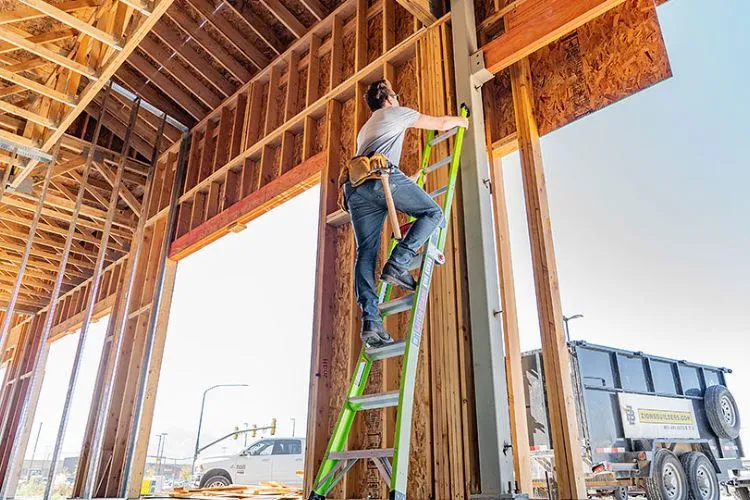
Overreaching significantly disturbs the ladder’s center of gravity and stability. To avoid this, always ensure you are standing within the ladder’s designated standing area and maintain a firm and balanced stance.
2. Climbing the Top Cap
Another unsafe practice is climbing the top cap or platform of a step ladder. The top cap is not intended as a safe stepping surface, and using it as such greatly increases the risk of the ladder tipping over or losing stability.
Climbing beyond the designated steps can result in serious accidents and potential falls. Remember to only use the steps provided and never step on the top cap or platform.
3. Using Unstable or Damaged Ladders
Using an unstable or damaged ladder is an accident waiting to happen. It’s essential to inspect your step ladder before every use and ensure it is in good working condition. Check for loose screws, broken hinges, or any other signs of damage.
If you notice any issues or instability, do not use the ladder and seek repairs or replacement. Using a compromised ladder puts you at risk of collapses or sudden failures that can result in serious injuries.
4. Neglecting Proper Placement
The placement of your step ladder is crucial to its stability and your safety. Neglecting proper placement can lead to accidents and falls. Here are some common mistakes to avoid:
- Uneven Surfaces: Placing a step ladder on uneven ground increases the risk of tipping over. Always ensure you position it on a flat and stable surface. If the ground is uneven, consider using a ladder leveler or finding a more suitable location.
- Unsecured Ladder: Failing to lock the ladder’s spreader bars or not extending it fully can result in instability and cause the ladder to collapse. Always double-check that the ladder is securely locked in its extended position before stepping on it.
- Inadequate Clearances: Be aware of your surroundings and ensure there is enough clearance for the ladder to be fully extended. Avoid placing the ladder near doorways or obstacles that may interfere with its proper functioning.
5. Carrying Heavy Loads
Step ladders have weight limits for a reason. Carrying heavy loads while ascending or descending the ladder can affect its stability and potentially lead to accidents. Always check the weight capacity of your ladder and avoid exceeding it.
If you need to carry tools or materials up the ladder, consider using a separate pulley system or having them handed to you once you’ve secured yourself on the ladder.
6. Using the Ladder in Poor Weather Conditions
Using a step ladder in adverse weather conditions, such as rain or strong winds, is a hazardous practice. Slippery rungs combined with gusts of wind can make it difficult to maintain balance and stability on the ladder, increasing the risk of falling.
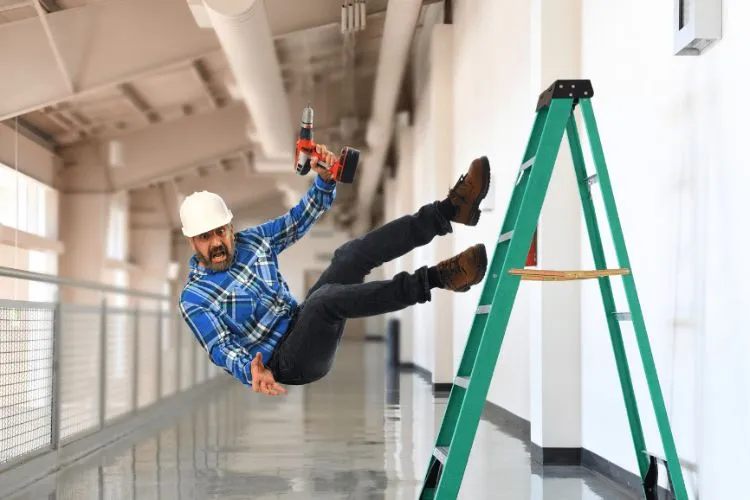
It’s best to avoid using a step ladder in poor weather conditions. Wait for the weather to improve or consider alternative ways to complete your tasks safely.
7. Ignoring Proper Footwear
Proper footwear is an often overlooked aspect of ladder safety. Wearing inappropriate or unsuitable shoes while using a step ladder can significantly increase the risk of slips and falls.
Opt for non-slip shoes or footwear with good traction to ensure stability while climbing up and down the ladder. Avoid wearing open-toe shoes, high heels, or any footwear that is not securely fastened to your feet.
By avoiding these common mistakes and following safety guidelines, you can ensure a secure and accident-free experience when using a step ladder. Remember to always stand within the designated area, inspect your ladder before each use, and avoid overreaching or carrying heavy loads.
Proper ladder placement, suitable footwear, and avoiding risky conditions will further enhance your ladder safety. Prioritizing these safety precautions will not only protect you from accidents but also contribute to a more efficient and productive work environment.
Conclusion:
When it comes to storing tools on step ladders, safety should always be the top priority. Understanding the weight capacity limits of your ladder, following best practices for tool storage, and recognizing situations when using ladders may not be appropriate are the key steps to ensuring a safe and efficient work environment.
By taking the necessary precautions and using specialized tool trays and accessories, you can enhance tool accessibility and minimize the risk of accidents. Remember, safety should never be compromised in the pursuit of convenience.
Now the ball is in your court, and you can get back to your writer to create an engaging and informative article based on this outline. Make sure to review it for any necessary edits or omissions before finalizing it.


